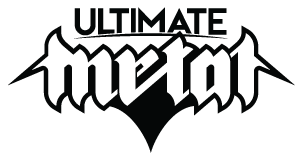Found a nice little study in the evolution of cultural orientations toward war and loss near Dortmund in the ruins at Hohensyburg, a place also home to a massive monument to Wilhelm I (and Bismarck) -- itself a fine example of nation building. There are three memorial plaques inside of the ruins, each commemorating the dead of three different wars, namely the Franco-Prussian War, WWI, and WWII. The plaques themselves are superficially similar, but their calls to the living in how they should actively commemorate the dead are radically different. The location itself is extremely symbolic as well. The three plaques are found in the ruins of a medieval castle at a location that was supposedly one of Charlemagne's footholds toward the christianization of Germany. Not content with the seemingly artificial and incomplete process of nationalization brought about by Bismarck, invocations of the Middle Ages were the go-to for nationalists searching for the historical foundation of Germany from the mid-19th century up until WWII.
*first image stolen from google, the rest are mine
Here's the plaque commemorating the dead of the 1870/71 Franco-Prussian War. It reads "Den Toten zum Gedächtnis; Den Lebenden zur Mahnung; Aus hiesiger Gemeinde starben im Kriege 1870/71 *list of names*" which translates literally as you might expect, "In memory of the dead; In remembrance for the living; From this community died in the 1870/71 war *list of names*." There's an inflection in the word Mahnung, however, which the literal translation of 'remembrance' or 'reminder' doesn't capture. There's an urgency to the word, which can also be translated as 'warning' or 'exhortation.' In this way, as a reminder of the dead this plaque functions as a warning to the living of the consequences of war. The plaque is personal, risen for five dead members of the community. The names are in what I suppose is likely order of rank, but it's not clear.

The first striking difference between the 1870/71 plaque and that commemorating the dead from WWI is the shear number of dead. From five to forty-six (I'll confess I'm not quite sure what the last entry is, "geb. Overweg u. Kind" means, and my wife [German] wasn't sure either, so it could be 46 soldiers, or 45 soldiers and a child). Note, too, how many share last names: Heitmann, Clemens, Jeuschede, etc. If not brothers, then cousins and fathers. Though this difference between the plaques is stark, what strikes me as more dramatic is what is inscribed above and below the names of the dead -- what this commemoration of the dead urges the living to do: "Und setzet ihr nicht das Leben ein, nie wird euch das Leben gewonnen sein; Es starben für das Vaterland; [below] Zum ehrenden Gedanken, der im Weltkriege 1914-1918 gefallenen Söhne der Gemeinde Syburg." Literal translation of the first two lines is rather clunky, but it reads "Life will never be conquered if it is not put at risk; They died for the fatherland; [below] In revered memory, to the fallen sons of Syburg who died in the world war of 1914-1918." War and death are not risks to life to be warned about; they are preconditions to life. It is not a reminder or a warning to the living. It is a call to action. The names listed here aren't depicted as victims of war as the previous plaque depicted its dead. They didn't die from war, they died for their country. It's no longer 'In memory of,' rather in 'revered memory,' making these dead men less dead and more spiritually active participants in society, but whose corporal body has been transmuted into that of the body of the state and national spirit.

A statue was erected before the plaque in 1930 which directly illustrates this. A greater than life-size monument, the fallen soldier and the eagle, symbolic of the nation, share a dynamic relationship. On the one hand, the eagle is arising out from his grave, or the nation from his sacrifice, and on the other hand, the eagle eyes over the fallen soldier protectively, the nation ensuring his sacrifice was not lost.

The resoluteness found in the previous plaque turns to anguish and utter capitulation following WWII. References to the lost generation of WWI almost ring hollow when compared to the list of the dead here. Depicted here is quite literally the death of a generation of men. There need be no warning. An alphabetized list of some seventy-eight dead men suffices. There need not even be complete sentences: "Opfer Weltkrieg 1939-45," or "Victims World War 1939-45," and "Helft dem Frieden," or "Support peace." Nor are there even references to district of Syburg -- it's self-evident where the dead once lived. It is an unadorned, solemn message: 'Never again.'








